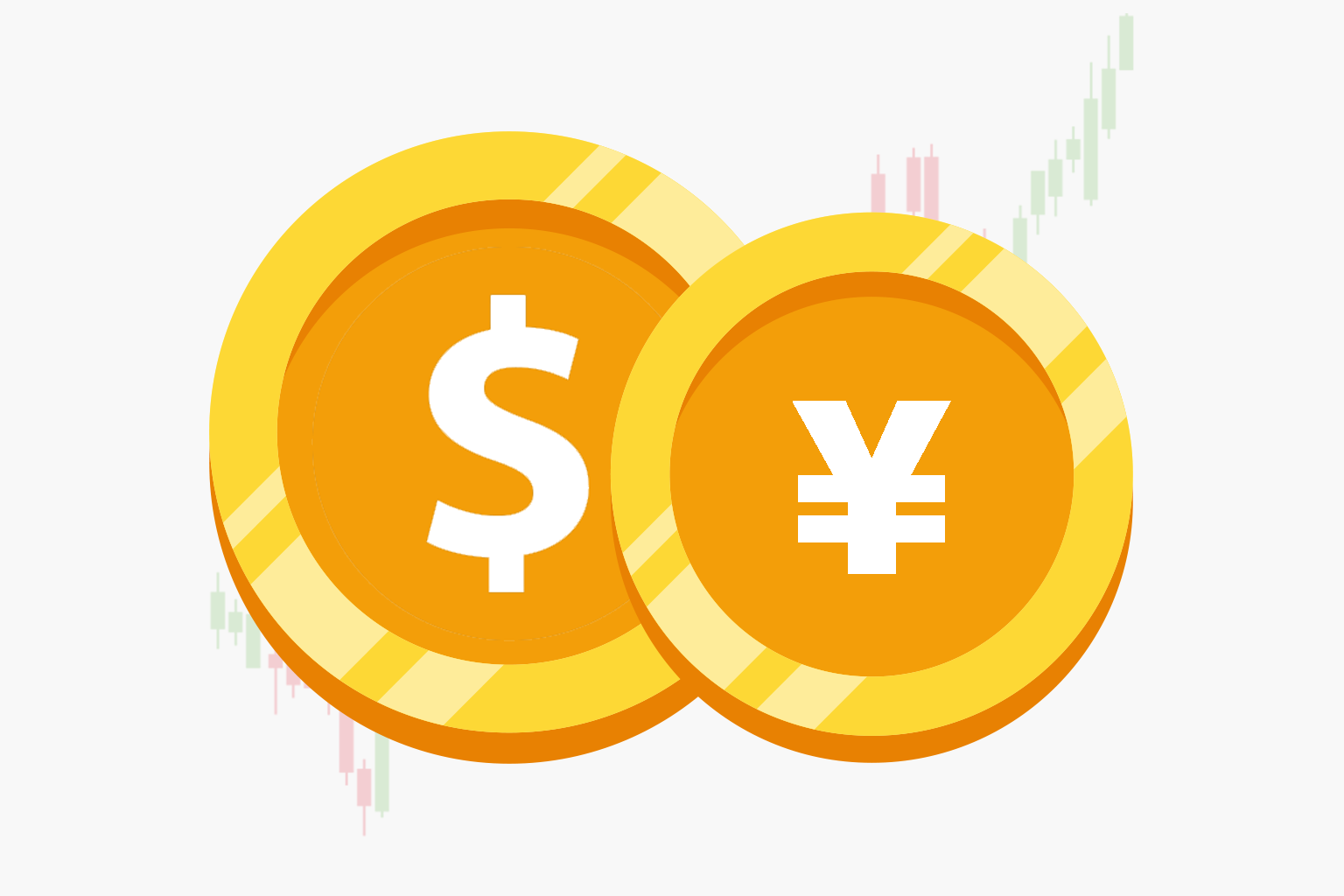The JPY/USD currency pair represents one of the most actively traded exchanges in the global forex market, showing how many Japanese yen are needed to purchase one US dollar. This currency pair serves as a critical benchmark for international trade and investment decisions between two of the world’s largest economies.
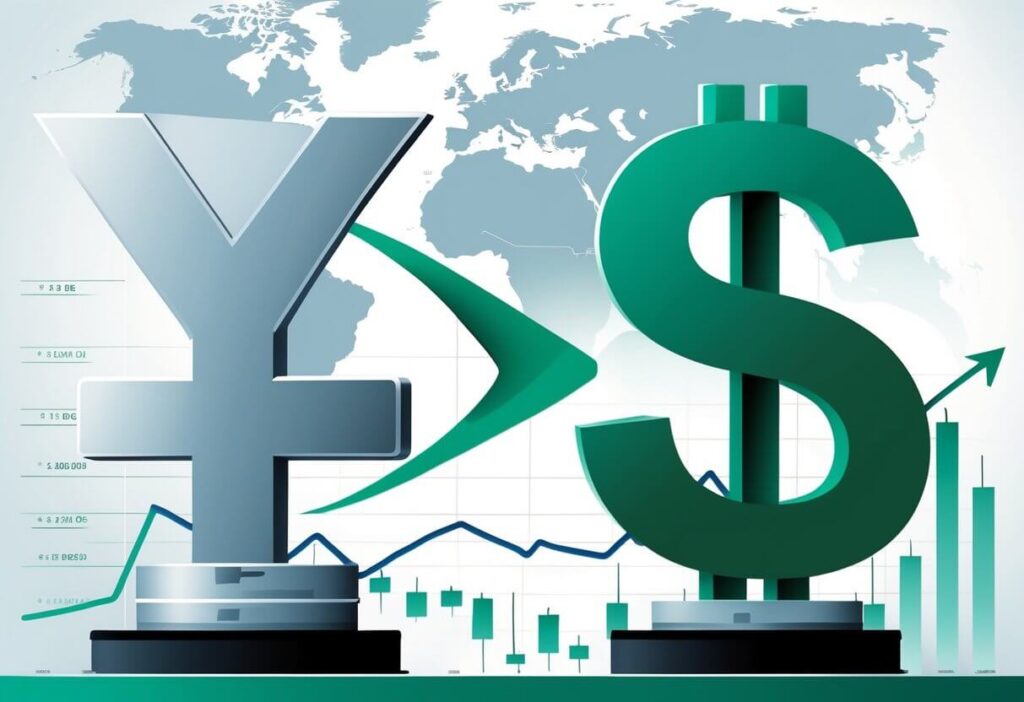
I’ve observed that JPY/USD attracts significant attention from traders and investors due to its unique characteristics as a pairing between two traditional safe-haven currencies. The exchange rate between these currencies fluctuates based on various economic factors, interest rate differentials, and market sentiment.
Understanding JPY/USD requires examining its historical patterns, the methodology behind its valuation, and the practical applications for different types of market participants. I’ll explore how this currency pair functions, its significance in global finance, and what drives its price movements in today’s interconnected economy.
Overview of JPY/USD
JPY/USD represents the exchange rate between the Japanese yen and the US dollar. This currency pair shows how many US dollars are needed to purchase one Japanese yen.
The pair operates as the inverse of the more commonly quoted USD/JPY. While USD/JPY shows how many yen equal one dollar, JPY/USD displays the dollar value of a single yen.
Key characteristics include:
- Lower numerical values due to the yen’s smaller unit size
- High liquidity from institutional trading
- Sensitivity to Bank of Japan policy decisions
The Japanese yen serves as one of the world’s major reserve currencies. Both currencies in this pairing are considered safe-haven assets during market uncertainty.
I observe that JPY/USD data reflects the same economic factors as USD/JPY but in reverse format. Interest rate differentials between the Federal Reserve and Bank of Japan significantly impact the exchange rate.
Primary influences on JPY/USD:
- Monetary policy differences between central banks
- Economic data releases from both countries
- Risk sentiment in global financial markets
- Trade relationships between Japan and the United States
The Japanese yen historically strengthens during periods of market stress. This makes JPY/USD particularly relevant for traders seeking to understand risk-off market conditions and safe-haven currency flows.
History & Evolution
The JPY/USD currency pair has a fascinating history that I can trace back to the post-World War II era. In 1944, the Bretton Woods Agreement established the Japanese yen’s initial peg to the US dollar at 360 yen per dollar.
This fixed rate remained stable for nearly three decades. However, the early 1970s marked a pivotal shift when the US dollar was devalued and Japan allowed the yen to float freely, creating the modern trading dynamics we see today.
Key Historical Milestones:
| Year | Event | Impact |
|---|---|---|
| 1971 | Yen allowed to float | Introduced volatility |
| 1985 | Plaza Accord signed | Significant yen appreciation |
| 1990s | Japan’s Lost Decade | Yen weakness period |
| 2012 | Abenomics introduced | Major yen depreciation |
The Plaza Accord of 1985 represented a crucial turning point. This agreement between major economies led to substantial yen appreciation against the dollar, addressing global trade imbalances.
Japan’s economic stagnation during the 1990s, known as the “Lost Decade,” kept the yen relatively weak. The government pursued export-boosting policies that maintained this trend.
The 2008 global financial crisis created another dramatic shift. Investors flocked to both currencies as safe havens, with the yen reaching a 13-year high against the dollar in 2011.
Recent data shows the USD/JPY exchange rate at 146.5090 on August 14, 2025, reflecting ongoing market dynamics. The pair has strengthened 1.82% over the past twelve months, demonstrating continued evolution in this relationship.
Composition & Sector Weights
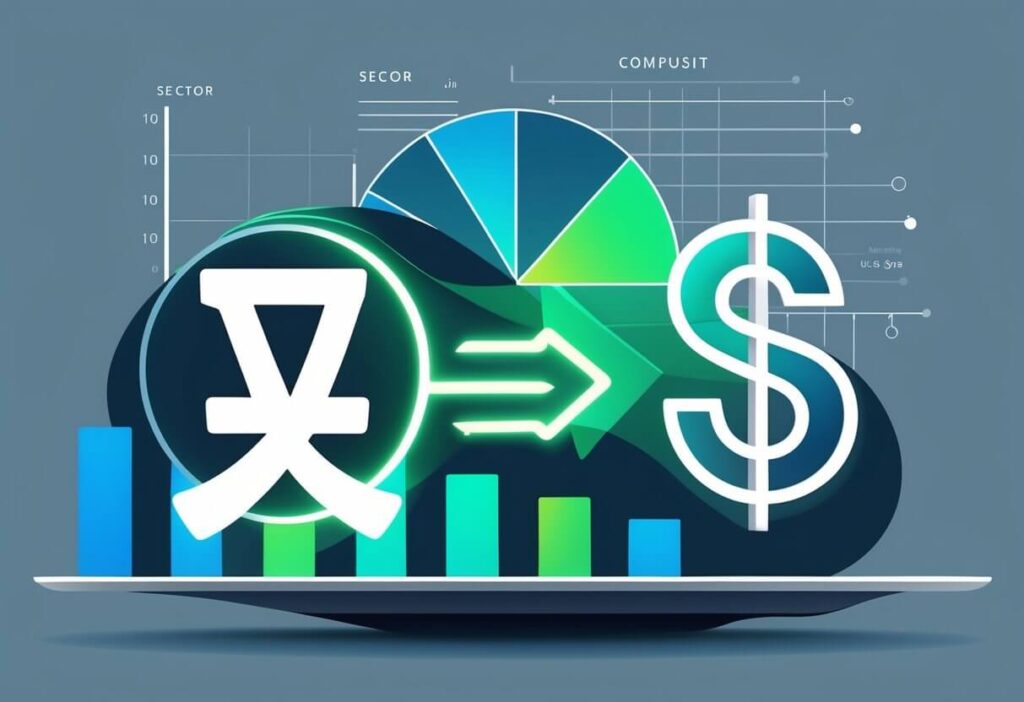
JPY/USD represents a direct currency exchange rate rather than a traditional index with sector allocations. The pair consists of two components with equal weighting in the exchange relationship.
Currency Components:
| Component | Weight | Role |
|---|---|---|
| USD | 50% | Base currency |
| JPY | 50% | Quote currency |
The USD/JPY currency pair operates as one unit where both currencies maintain equal importance in determining the exchange rate. I observe that this differs from equity indices that weight components by market capitalization.
Underlying Economic Sectors:
The exchange rate reflects the combined economic strength of both nations’ industrial bases. Japan’s economy emphasizes manufacturing, technology, and automotive sectors. The United States maintains a diverse economy spanning technology, financial services, healthcare, and consumer goods.
Trading Weight Distribution:
More than $250 billion of goods and services are exchanged between the US and Japan annually. This creates natural supply and demand flows that influence the pair’s movement.
Influence Factors:
Central bank policies carry significant weight in JPY/USD movements. The Bank of Japan and Federal Reserve decisions impact the exchange rate through interest rate changes and monetary policy adjustments.
Each currency’s strength depends on its respective nation’s economic performance across all sectors rather than specific industry weightings.
Calculation Methodology
I’ll explain the primary methods for calculating JPY/USD currency conversions. The direct method involves multiplying the US dollar by the exchange rate to determine the yen equivalent.
Direct Method Example:
- Exchange rate: 105.50 JPY per USD
- Converting $100: 100 × 105.50 = ¥10,550
The indirect method divides one Japanese yen by the exchange rate to find the dollar value. This approach works when converting yen to dollars.
Indirect Method Example:
- Exchange rate: 105.50 JPY per USD
- Value of 1 JPY in USD: 1 ÷ 105.50 = $0.0095
- Converting ¥10,000: 10,000 × 0.0095 = $95
I can also use online forex calculators for accurate results. These tools require three inputs: the amount to convert, the currency pair, and the current exchange rate.
Calculation Requirements:
| Method | Input Needed | Output |
|---|---|---|
| Direct | USD amount × Rate | JPY value |
| Indirect | JPY amount ÷ Rate | USD value |
| Calculator | Amount + Pair + Rate | Converted value |
The Japanese yen uses different decimal conventions than most currencies. JPY calculations account for these differing decimal place considerations when performing conversions.
Significance & Common Uses
I observe that JPY/USD represents one of the world’s most liquid and actively traded currency pairs. The USD/JPY exchange rate reflects the economic health of two major global economies.
Primary Uses:
• Currency Converter Operations – International businesses rely on JPY/USD rates for pricing and financial planning • Investment Portfolio Diversification – Traders use this pair to balance currency exposure • Economic Indicator Analysis – Financial analysts monitor the pair as a barometer for market sentiment
I notice that both currencies traditionally serve as safe haven assets during market uncertainty. This dual safe-haven status creates unique trading dynamics when global risk appetite shifts.
The pair’s significance extends to carry trade strategies. When interest rate differentials exist between the Federal Reserve and Bank of Japan, I see investors borrowing in the lower-yielding currency to invest in higher-yielding assets.
Market Applications:
| Use Case | Purpose | Risk Level |
|---|---|---|
| Hedging | Currency protection | Low-Medium |
| Speculation | Profit from rate changes | High |
| International Trade | Payment settlements | Low |
Financial markets closely watch JPY/USD movements as they often signal broader economic trends. The pair’s high liquidity makes it attractive for both institutional and retail traders seeking efficient execution.
I find that central bank policies significantly impact this currency pair, making it essential for monetary policy analysis.
How to Invest (No Advice)
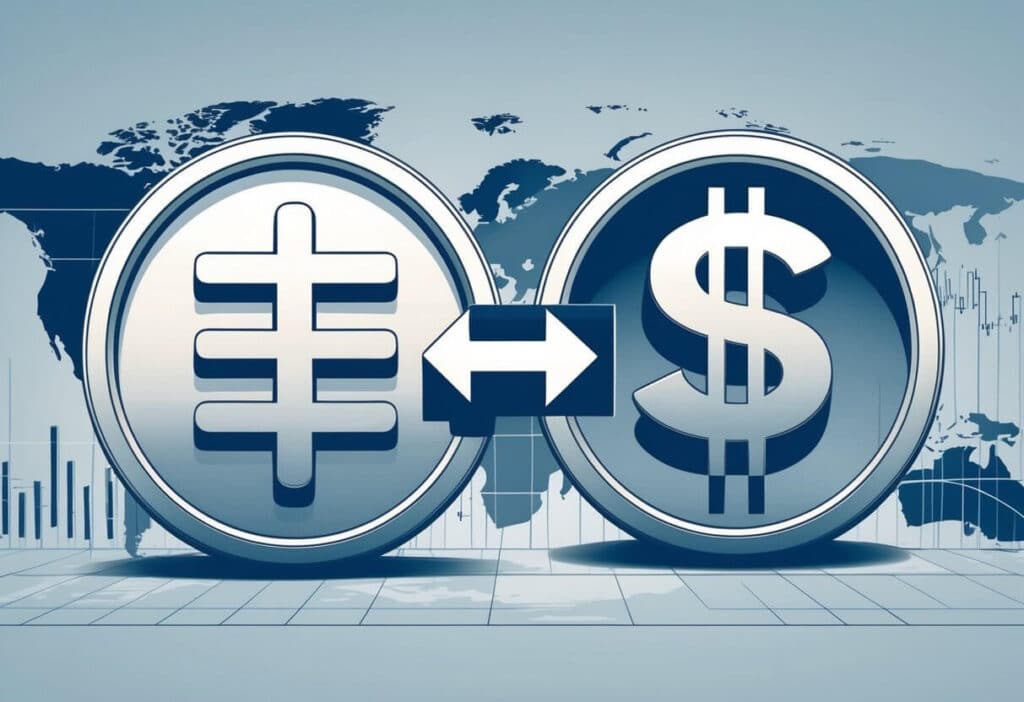
I can outline several approaches for JPY/USD trading without providing specific investment advice. The methods vary significantly in complexity and risk levels.
Market orders execute immediately at current prices. Limit orders activate only when the pair reaches your specified price target.
Common Investment Methods
| Method | Time Frame | Risk Level |
|---|---|---|
| Day Trading | Hours | High |
| Swing Trading | Days to Weeks | Medium |
| Position Trading | Months | Lower |
I observe that USD/JPY offers excellent liquidity with daily trading volumes exceeding $150 billion. This high volume typically means tighter spreads and easier execution.
Fundamental analysis involves examining economic data from both countries. Interest rate differentials between the US and Japan often drive long-term movements.
Technical analysis uses price charts and indicators. Moving averages, support levels, and trend lines help identify potential entry points.
I note that multiple trading strategies exist for USD/JPY, including trend following and range trading approaches.
Risk management remains crucial regardless of strategy. Setting stop-loss orders helps limit potential losses on individual trades.
Many traders start with demo accounts to practice without real money. This allows testing different approaches and understanding market behavior.
The pair responds to economic releases from both the Federal Reserve and Bank of Japan. I find that monitoring central bank communications provides valuable context for price movements.
Common Questions on JPY/USD
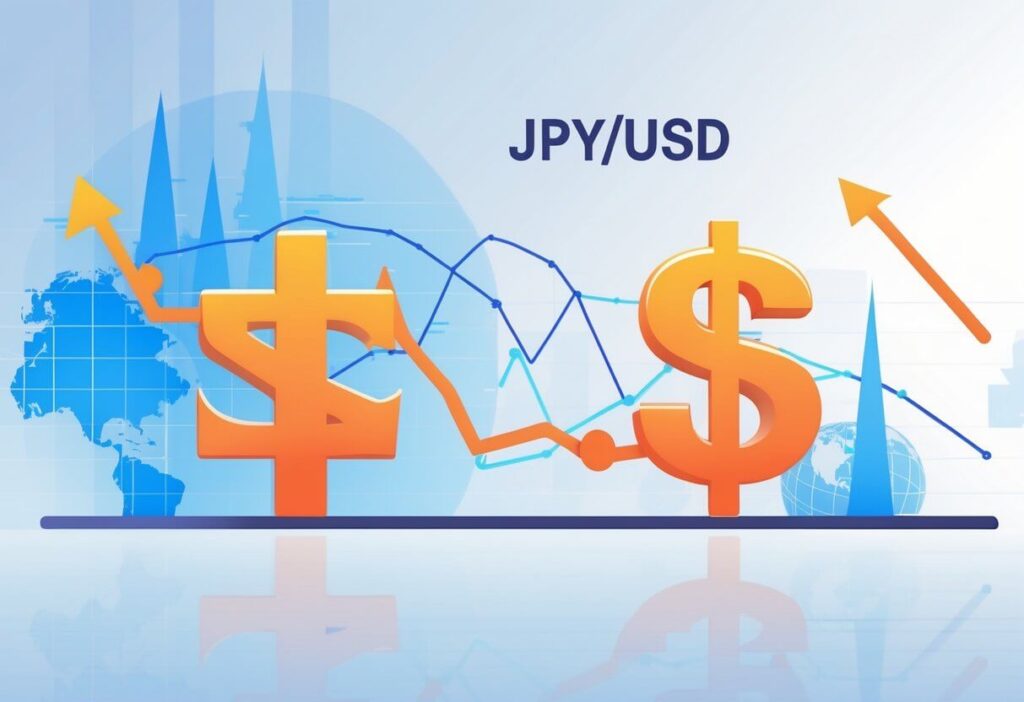
The JPY/USD exchange rate operates continuously during forex market hours with real-time updates, differs from USD/JPY by showing how many dollars equal one yen, and can be tracked through various financial platforms and trading tools.
How Often Is the Index Reviewed?
The JPY/USD exchange rate updates continuously during active forex trading sessions. Markets operate 24 hours a day from Sunday 5 PM EST through Friday 5 PM EST.
I observe that the currency pair shows real-time fluctuations based on market activity. The rate changes every few seconds during peak trading hours.
Major trading sessions include:
- Tokyo: 7 PM – 4 AM EST
- London: 3 AM – 12 PM EST
- New York: 8 AM – 5 PM EST
The most volatile periods occur during session overlaps. Tokyo-London overlap from 3 AM – 4 AM EST and London-New York overlap from 8 AM – 12 PM EST generate the highest trading volumes.
Banks and financial institutions provide continuous pricing updates. Central bank announcements from the Federal Reserve or Bank of Japan can trigger immediate rate adjustments outside normal review cycles.
What’s the Difference Between JPY/USD and Close Peer?
JPY/USD represents the inverse of the more commonly quoted USD/JPY pair. While USD/JPY shows how many yen equal one dollar, JPY/USD displays how many dollars equal one yen.
Key differences:
| Aspect | JPY/USD | USD/JPY |
|---|---|---|
| Base currency | Japanese Yen | US Dollar |
| Quote currency | US Dollar | Japanese Yen |
| Typical value | 0.0067 | 150 |
I notice that USD/JPY receives more market attention and trading volume. Most forex platforms default to USD/JPY quotations since it’s among the most liquid currency pairs globally.
The mathematical relationship remains constant: JPY/USD = 1 ÷ USD/JPY. When USD/JPY rises, JPY/USD falls proportionally.
Where Can I Track the Index Live?
I can access live JPY/USD rates through multiple financial platforms and trading applications. Major forex brokers provide real-time quotes with bid-ask spreads and historical charts.
Popular tracking platforms:
- Trading platforms: MetaTrader 4/5, TradingView, Bloomberg Terminal
- Financial websites: Yahoo Finance, MarketWatch, Investing.com
- Mobile apps: Forex broker apps, XE Currency, Currency Converter Plus
Most platforms display additional data including daily high/low, percentage changes, and technical indicators. I find that institutional-grade platforms offer more precise pricing with tighter spreads.
Commercial banks serve as primary intermediaries for currency exchange and provide live rates for retail customers. Many banks offer online rate displays updated every few minutes.
Professional traders often use multiple data feeds to ensure accuracy. Reuters and Bloomberg provide institutional-level pricing that matches interbank market rates.

